Syn.: Acrostichum barbarum L., Osmunda totta Sw., Todea africana Willd.
Family: Osmundaceae Gérardin et Desv.
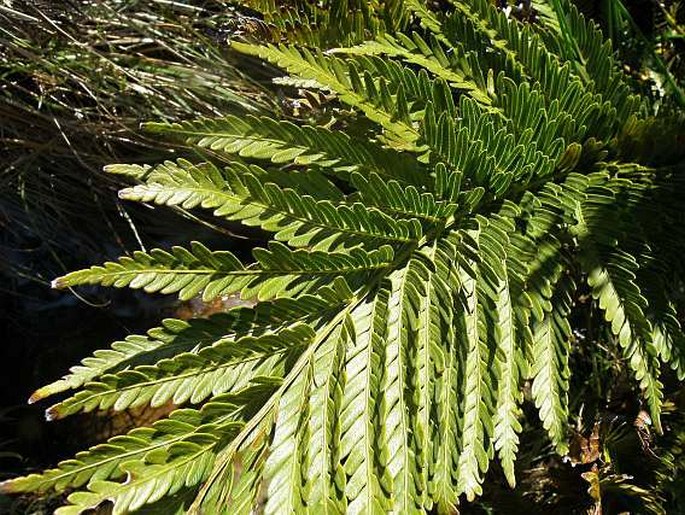
Distribution: This species occurs in two parts of the Southern Hemisphere – southern Africa (between the Cape Peninsula and Lesotho, Swaziland, Mozambique and Zimbabwe), and eastern and southeastern Australia, Tasmania and New Zealand.
Ecology: Grows along streams and rivers and along moist margins of evergreen forests, predominantly in sandy soils derived from poor quarzites and sandstones. In South Africa it occurs in open fynbos, but is more sporadic in other vegetation types, in elevations from sea level to 1600 m a. s. l.
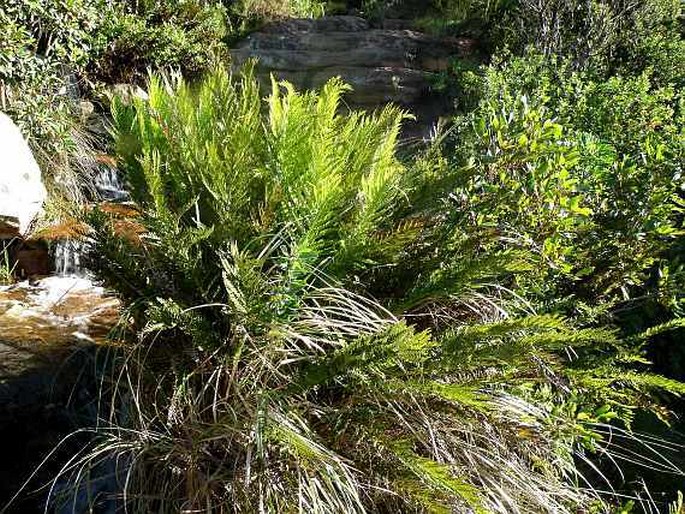
Description: Large fern with erect rhizome 0.5–2 m tall (Australian plants arise up to 3 m) and up to 30 cm in diameter. Sterile and fertile fronds are similar, 0.5–2(–2.5) m long and 15–60 cm wide, lanceolate in outline, 2-pinnate, hard, shiny, glabrous or subglabrous; pinnules or lobes are oblong, slightly falcate, 1.5–8 cm long and 0.4–0.8 cm wide, adnate to costa, with crenate to serrate margins and acute apex. The sporangia are eusporangiate, borne on the undersurface of the pinnules of the basal third of the lower pinnae, they are dark brown, thick-walled, exindusiate, opened by slit.
Threat and protection: This species is considered as Least Concern (LC) in the Red List of South African Plants (2009).
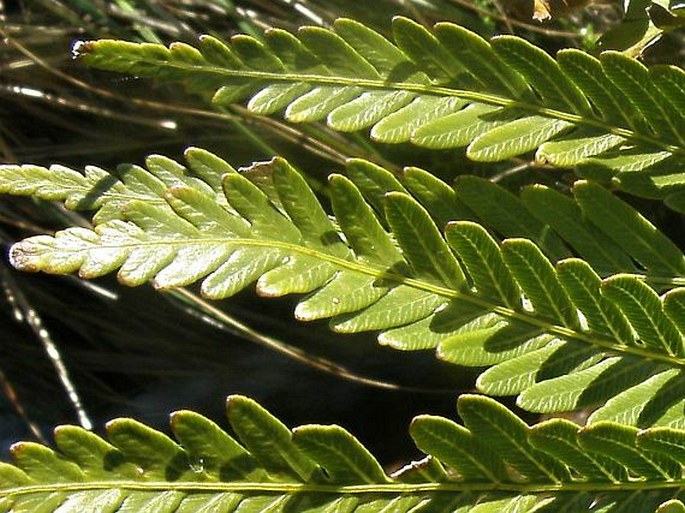
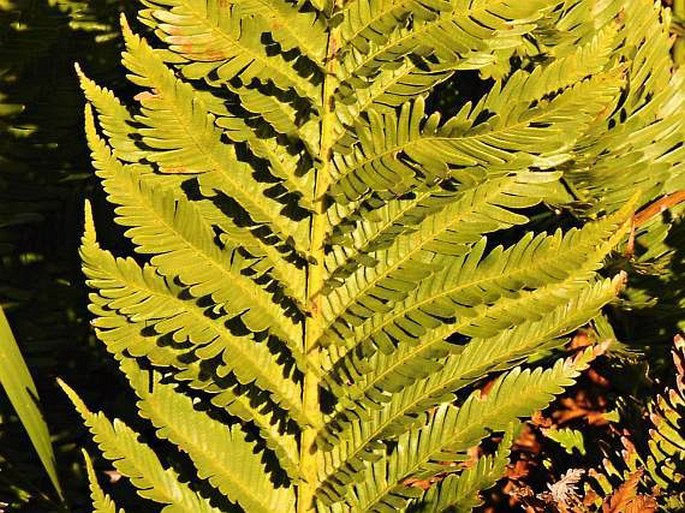
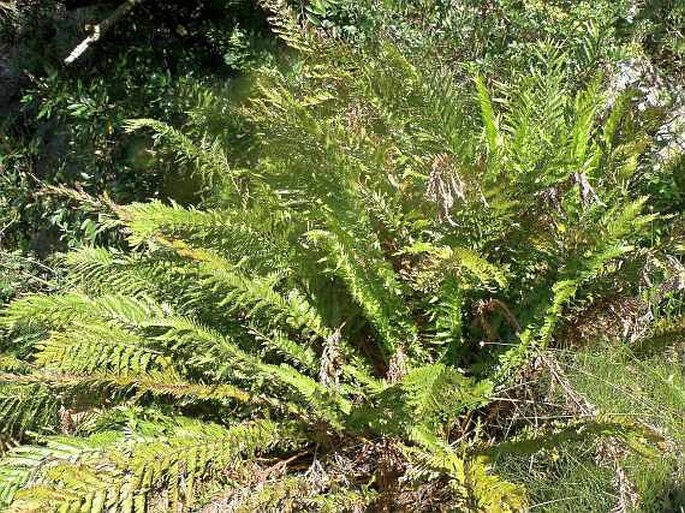
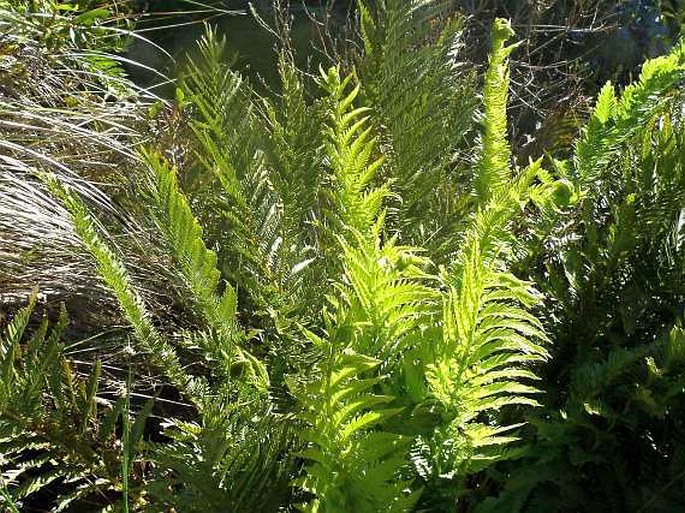
These images were taken in the Republic of South Africa, Western Cape, Cape Town, Table Mountain, northern slopes (by Alena Vydrová and Vít Grulich, 25. 9. 2012).


